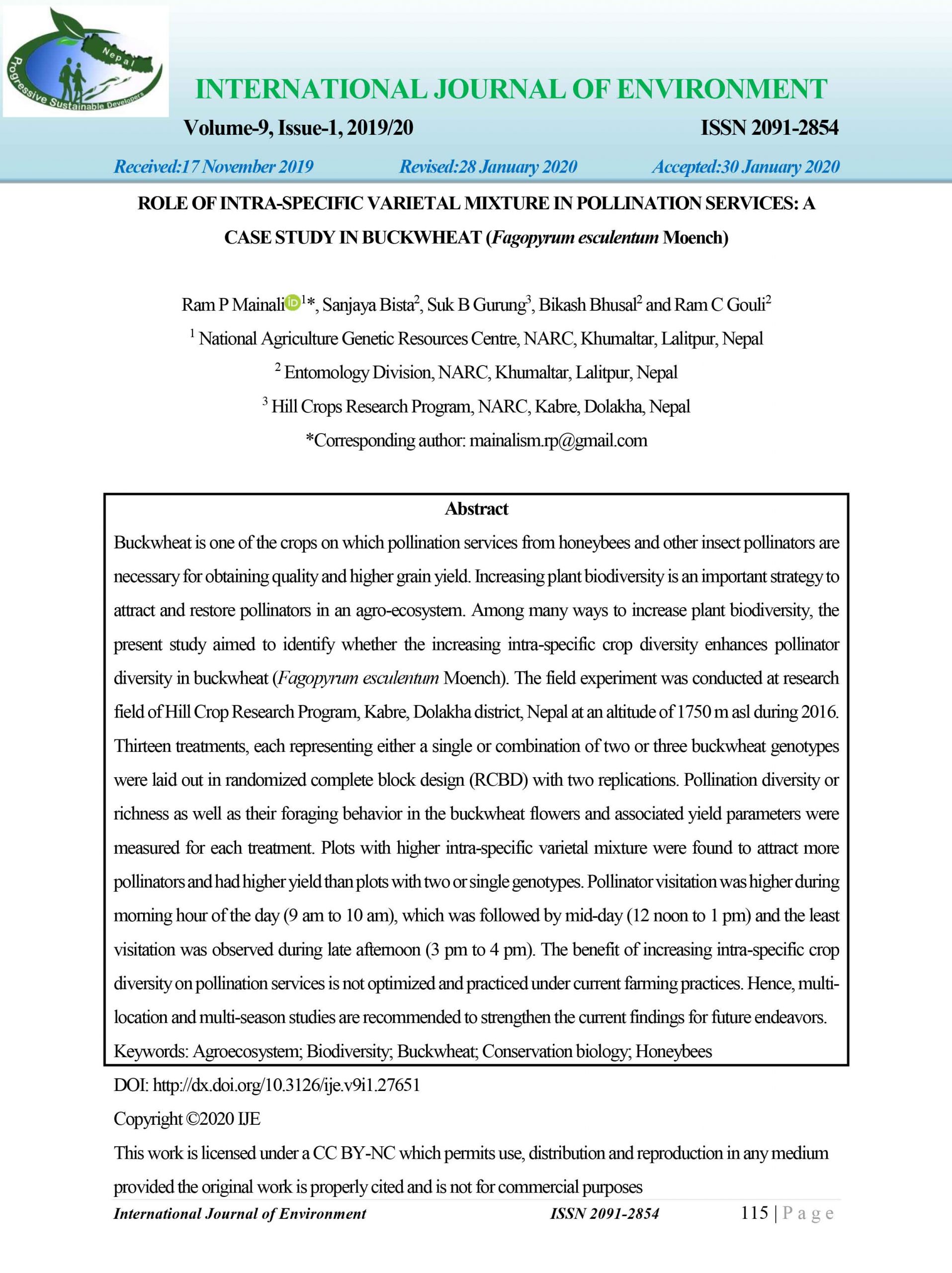
ROLE OF INTRA-SPECIFIC VARIETAL MIXTURE IN POLLINATION SERVICES: A CASE STUDY IN BUCKWHEAT (Fagopyrum esculentum Moench)
Authors: Ram P Mainali1, Sanjaya Bista, Suk B Gurung, Bikash Bhusal and Ram C Gouli
Year: 2020
Abstract:
Buckwheat is one of the crops on which pollination services from honeybees and other insect pollinators are necessary for obtaining quality and higher grain yield. Increasing plant biodiversity is an important strategy to attract and restore pollinators in an agro-ecosystem. Among many ways to increase plant biodiversity, the present study aimed to identify whether the increasing intra-specific crop diversity enhances pollinator diversity in buckwheat (Fagopyrum esculentum Moench). The field experiment was conducted at research field of Hill Crop Research Program, Kabre, Dolakha district, Nepal at an altitude of 1750 m asl during 2016. Thirteen treatments, each representing either a single or combination of two or three buckwheat genotypes were laid out in randomized complete block design (RCBD) with two replications. Pollination diversity or richness as well as their foraging behavior in the buckwheat flowers and associated yield parameters were measured for each treatment. Plots with higher intra-specific varietal mixture were found to attract more pollinators and had higher yield than plots with two or single genotypes. Pollinator visitation was higher during morning hour of the day (9 am to 10 am), which was followed by mid-day (12 noon to 1 pm) and the least visitation was observed during late afternoon (3 pm to 4 pm). The benefit of increasing intra-specific crop diversity on pollination services is not optimized and practiced under current farming practices. Hence, multi-location and multi-season studies are recommended to strengthen the current findings for future endeavors.
Keywords: Agroecosystem; Biodiversity; Buckwheat; Conservation biology; Honeybees